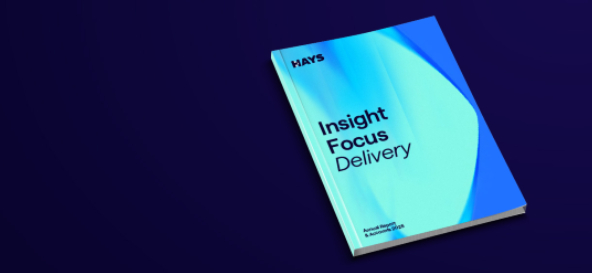
Nine ways to lead your employees’ wellbeing remotely
Much of the world’s population has been forced to work remotely, some for the first time, and all under difficult, unprecedented circumstances. Even as some restrictions ease and some people are returning to their workplaces, it is clear that, for many organisations, there will be a permanent increase in home working. For some, it makes economic sense. For others, it is a necessity to protect their own health or that of vulnerable family members and, for some, continued child care. It has never been more important then, that leaders appreciate the varying pressures on their people and support their wellbeing.
To do this, the first step is to be clear what we mean by wellbeing. We can then be more purposeful in how we respond to employees’ differing needs, particularly in today’s complex and uncertain environment. Understanding concepts of wellbeing will also help us to become more aware of our own behaviours and the impact, as leaders, that we have on others.
In this article we explore two key perspectives on psychological wellbeing and outline nine practical steps leaders can take to manage themselves and their employees to sustain high levels of engagement and wellbeing through these difficult times.
There are two main perspectives on psychological wellbeing, Hedonic and Eudaimonic;
1. Hedonic wellbeing (for example, job satisfaction) refers to levels of happiness and contentment at work (as opposed to being unhappy and dissatisfied). Satisfaction is derived from the Latin, satis, meaning enough; the term implies sufficiency or adequacy; something is OK, rather than wonderful and exciting. Job satisfaction is an example of hedonic wellbeing.
In terms of a job or career, a hedonic perspective might be preferred by someone who has particular skills or expertise and is satisfied in their role – as long as they feel recognised and appreciated for their contribution, and feel that there is a good fit with what they want from that role. For example, a tax expert in a firm of accountants who offers brilliant advice but does not want to take on other leadership roles within the practice such as business development; or an IT specialist who has the ability to solve complex technical issues but does not want to progress into a wider managerial role.
2. Eudaimonic wellbeing (for example, job engagement), a concept originally developed by Aristotle, is achieved when individuals seek fulfilment through personal growth and development, as opposed to merely feeling satisfied. Along this personal journey of growth and development, there are likely to be periods of happiness and satisfaction, but also periods of frustration and dissatisfaction. The individual will want to rise to new challenges, overcome barriers and strive to better themselves. As a result, they will feel highly engaged with their work and experience a sense of vitality and energy. For example, a recent arts graduate who has joined a market research company, arranges to take an online course on data analytics to strengthen their skills in this area and seeks out a mentor, within the firm, to give them insights and guidance as they tackle unfamiliar projects.
In summary, job engagement is seen as a form of eudaimonic wellbeing, whilst job satisfaction is a form of hedonic wellbeing. In making the distinction between the two concepts, we are not proposing an either/or scenario. Both forms are related as they incorporate positive feelings. It is possible that, at different times in our careers and our self-development, we may be more at ease with one concept than the other.
Given the particular pressures of leading remotely, an understanding of these two concepts can help leaders to improve employee happiness and productivity through an indefinite period of uncertainty.
Improving employee happiness and productivity from afar
For those employees who take a more hedonic approach (i.e. striving for job satisfaction rather than job engagement), a radical change to their normal way of working is likely to result in some level of resistance: it may be discomfort with embracing new technology; adjusting to working from home; a disruption in normal patterns of interaction with colleagues. They will look to their leader for calm guidance, clarity on work priorities, hours of work and what they are empowered to do. Others may adapt more easily, particularly if they are task-oriented, have a clear programme of work and are at ease with technology and working virtually.
Attending to the eudaimonic wellbeing of employees has different challenges and rewards. Highly engaged employees seek more than job satisfaction. They thrive in a working environment where they are given challenges; feel empowered and trusted; where they are given autonomy and discretion in the design of their jobs which enables them to draw on their unique skills; to create and take initiatives; to be rewarded for achievements and take responsibility for their actions. They are motivated to expend energy even in the face of difficulties and threats to their wellbeing. This can be more easily monitored when office-based. There are greater risks for leaders to be aware of when working remotely. Members of their team might find it difficult to acknowledge problems, reluctant to ‘trouble’ their boss and feel to do so is an admission of failure, of letting them down.
Eudaimonic wellbeing: avoiding burnout in highly engaged employees
Employees with high levels of engagement and motivation, an eudaimonic perspective on wellbeing, will tend to push boundaries more than less engaged individuals. Pressures to perform, high expectations and a competitive enivironment can all contribute to a desire to achieve more than is realistic or seek to go beyond their current job description.
If managed poorly, this can result in some job dissatisfaction but, if managed well, this can be recognised as part of their development and learning – enabling them to drive their own performance in a healthy way and experience a sense of wellbeing at the same time. Working remotely, can offer opportunities to take initiatives, ‘stand on our own two feet’, if given the right level of encouragement and support. If we push ourselves outside our comfort zone, we will feel insecure for a while. If we devote all our energies to a project and finish it successfully, we can feel exhausted but elated. If we take risks, we will fail sometimes and feel deflated, but, if this is recognised as part of our personal growth by our organisation, then we will learn and move on with renewed confidence.
When we are thriving in a dynamic environment, our work can become all consuming. We are energised; we can feel in the flow; we get carried away with the project or initiative we are working on; our confidence is high; we seem in tune with our work and colleagues. However, there can be both positive and negative effects to which leaders need to be attuned.
Engaged, empowered and high-performing employees may gain in confidence but may also experience anxiety as they find themselves fulfilling roles in their organisation that takes them outside their comfort zone and beyond their formal remit. They may push themselves too far, take on too many responsibilities and then suddenly find that they cannot manage everything as well as they would like. This may ultimately lead to exhaustion. Feeling trusted by their leader makes it harder to say no to a higher perceived workload. The pressure can start to impact sleep patterns and emotional balance; working longer hours but less productively; working when unwell, leading to increased risk of sickness absence in the long term.
These conditions can be all the harder to identify and manage when leading remotely. To be effective, it is imperative for the leader to understand their own preferred approach to wellbeing and the impact that they will have on their employees.
Nine practical steps to lead employee wellbeing remotely
Below, we’ve outlined a few practical steps leaders can take to manage themselves and their employees during these uncertain times, in order to sustain high levels of engagement, performance and wellbeing:
- Develop a shared identity, purpose and values with your team. A shared identity helps them to balance autonomy and collaboration which is critical when working remotely.
- Show you are a committed member of the team and a source of social support. Motivate and interact with your team, but notice any tendency to micro-manage which can be tempting when leading at a distance.
- Build trust and empowerment by discussing with your employees how their workload is set up so that there are clear expectations (e.g. autonomy, workload, resources, challenges).
- Review and communicate regularly. In a fast changing, dynamic environment the pace and pressure of work can fluctuate. Employees need time to reflect and review their work with their leader; an essential part of their on-going learning and development.
- Consult and involve employees in decisions, particularly those that affect them. Identifying and addressing issues early can enhance rather than limit empowerment.
- Be mindful of your own interactions, for example, the tone of email communications (a negative tone is amplified in writing; it’s always better to speak directly, if possible).
- Take care of your own health and wellbeing. Be mindful how you, as a leader, set example. Do you clearly separate work and home? If you do, you will be perceived as a work-life-friendly role model.
- Leaders should not be expected to be always available and have opportunities to switch off when at home – as should their teams. For example, agree no out-of-hours email communications which make it difficult to switch off from work, especially when coming from the manager/leader.
- Constantly challenge your own openness to learning and innovative thinking. Many leaders have been forced to completely rethink how they operate in the current environment and to anticipate how they will emerge with a sustainable future. Such creativity supports eudaimonic wellbeing, in the form of personal and professional growth and vitality.
COVID-19 has demonstrated what can be achieved when goals are clear and innovative solutions are needed urgently. Timelines shorten drastically; creativity is encouraged; a commitment to continuous improvement is essential; collaboration increases; new channels and technology are speedily adopted. The economic and social impact of this global crisis will be brutal; the world of work will have changed radically. To survive and thrive, leaders will have to reconcile paradoxical behaviours and take a more holistic approach that balances high performance with the wellbeing of their employees and themselves.
- How leaders can demonstrate trust in their people during difficult times
- How to prioritise employee upskilling during COVID-19 and beyond
- What is a hybrid team and how do I lead one?
- A quick checklist to help you manage your remote team more easily
- Leading through crisis – defining reality and giving hope
- How to have supportive conversations about the impact of Coronavirus
- How to stay connected as a newly remote team
- Seven ways to make your team more adaptable to change






